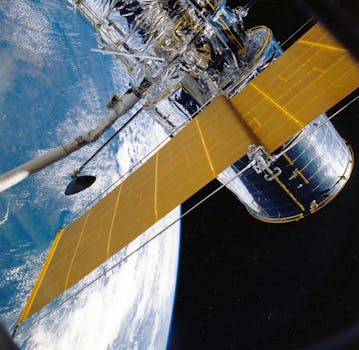
GEO Satellites: Introduction to Geostationary Orbit Satellites
GEO satellites, or geostationary orbit satellites, are a type of satellite that orbits the earth at an altitude of approximately 36,000 kilometers above the equator. This unique orbit allows GEO satellites to remain stationary relative to a fixed point on the earth’s surface, making them ideal for a variety of applications, including telecommunications, navigation, and earth observation. The focus keyword GEO satellites is used to describe these satellites, which have been a cornerstone of modern telecommunications and navigation systems for decades.
The concept of GEO satellites was first proposed by scientist Arthur C. Clarke in 1945, and the first GEO satellite, Syncom 2, was launched in 1963. Since then, hundreds of GEO satellites have been launched, providing a range of services, including television broadcasting, telecommunications, and weather forecasting.
One of the key benefits of GEO satellites is their ability to provide continuous coverage of a specific region. Because they remain stationary relative to a fixed point on the earth’s surface, GEO satellites can provide uninterrupted service to a particular area, making them ideal for applications such as television broadcasting and telecommunications.
In addition to their use in telecommunications and navigation, GEO satellites are also used for earth observation. These satellites are equipped with specialized sensors and cameras that allow them to collect data on the earth’s surface, including weather patterns, ocean currents, and land use. This data is used to support a range of applications, including weather forecasting, climate modeling, and natural disaster response.
How GEO Satellites Work
GEO satellites work by using a combination of propulsion systems and gravity to maintain their orbit around the earth. The satellites are launched into space using a rocket, and once they reach their desired altitude, they use a combination of propulsion systems, including thrusters and ion engines, to maintain their position.
The satellites are also equipped with a range of instruments, including transponders, antennas, and sensors, which allow them to collect and transmit data. The transponders are used to amplify and re-transmit signals, while the antennas are used to receive and transmit data. The sensors are used to collect data on the earth’s surface, including weather patterns, ocean currents, and land use.
GEO satellites are typically powered by solar panels, which provide the energy needed to operate the satellite’s systems. The satellites are also equipped with backup power sources, such as batteries, which provide power during periods of eclipse or when the solar panels are not generating enough energy.
Applications of GEO Satellites
GEO satellites have a range of applications, including telecommunications, navigation, and earth observation. In telecommunications, GEO satellites are used to provide television broadcasting, internet connectivity, and mobile phone services. They are also used to provide navigation services, including GPS and other satellite-based navigation systems.
In earth observation, GEO satellites are used to collect data on the earth’s surface, including weather patterns, ocean currents, and land use. This data is used to support a range of applications, including weather forecasting, climate modeling, and natural disaster response.
GEO satellites are also used in a range of other applications, including scientific research, military operations, and commercial services. They are used to study the earth’s climate, oceans, and land use, and to provide critical services, such as search and rescue operations and emergency response.
Future of GEO Satellites
The future of GEO satellites is likely to be shaped by a range of factors, including advances in technology, changes in market demand, and the development of new applications. One of the key trends in the GEO satellite industry is the development of new technologies, such as high-throughput satellites and advanced propulsion systems.
These technologies are expected to enable the development of more efficient and cost-effective GEO satellites, which will be able to provide a range of new services, including high-speed internet connectivity and advanced navigation services.
Another key trend in the GEO satellite industry is the growth of the commercial market. As the demand for satellite-based services continues to grow, companies are investing in the development of new GEO satellites and services. This is expected to drive innovation and growth in the industry, and to enable the development of new applications and services.






